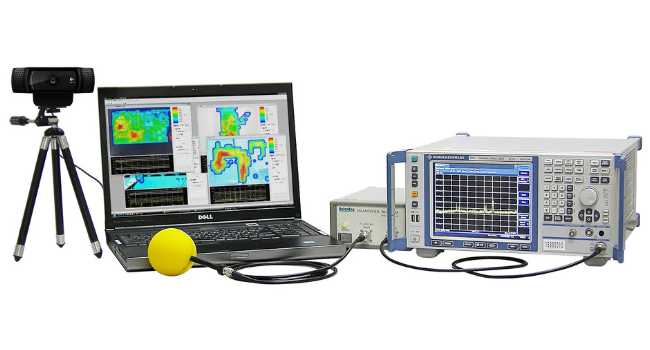The Rigol DSA815 Spectrum analyser features a zero span mode that can be helpful in observing modulated signals. In swept mode, the detector of the analyser is sweeping across a span of frequencies at a predefined rate. The display then shows the amplitude vs. frequency of that swept scan.
In zero span mode, the detector is fixed at a selected center frequency with a bandwidth set by the resolution bandwidth (RBW) setting. The analyser then sweeps time. This effectively puts the analyser into a mode where the X-axis represents time and the Y-axis denotes amplitude. The display is then amplitude vs. time, much like an oscilloscope.
The DSA-815 has a minimum sweep time of 20us in Zero span mode. In the following section, we show some of the outputs of the DSA with a modulated input.
The source waveform is a 50MHz sine wave that was burst at various rates. The burst period is measured from the leading edge of successive bursts.
Hopefully this can help you to gauge whether the Zero Span Mode can help you with your modulation studies.
Figure 1: Burst period 5us.
Figure 2 : 50MHz Carrier sine wave zoom.
Figure 3: 50MHz sine wave with a burst period of 10uS as captured by an Oscilloscope.
Figure 4: 50MHz sine wave with a burst period of 10uS.
There are 10 divisions on the display, so each division is 2us. In the case of the 10us burst, you can see that the peaks are separated by 5 divisions which equals 10us. So, the programmed sourced value and the measured values match.
If we decrease the burst period to 5us, you can see that we increase the number of “peaks” displayed on the Spectrum Analyzer and the separation between the peaks is equivalent to the burst period.
Figure 5: 50MHz sine wave with a burst period of 10uS.
Figure 6: 50MHz sine wave with a burst period of 5uS.
Home / Knowledge Base / Knowledge Base Spectrum Analysers / Knowledge Base DSA800 Series / What is the fastest sweep time in Zero Span mode with a Spectrum Analyser?
What is the fastest sweep time in Zero Span mode with a Spectrum Analyser?
Posted on: December 16th, 2020 by Doug Lovell
Product Categories
AC Power Supplies / Frequency ConvertersDC Power Supplies
DC Electronic Loads
Test & Measurement
Safety Testers
EMC
Soldering Irons / Test Tools
Manufacturers
Rental

Service & Support
AboutContact
Newsletter
Service Returns Form
Returns Policy
Terms and Conditions
Privacy Policy
Shipping & Delivery
My account


Copyright © 2024. All rights reserved by Telonic Instruments Ltd
Website operated by Jumping Giraffe Ltd. Jumping Giraffe Ltd is not responsible for content on external websites.

































































































 FREE SHIPPING £75+
FREE SHIPPING £75+
 CELEBRATING 50+ YEARS
CELEBRATING 50+ YEARS
 PRICE MATCH GUARANTEE
PRICE MATCH GUARANTEE

